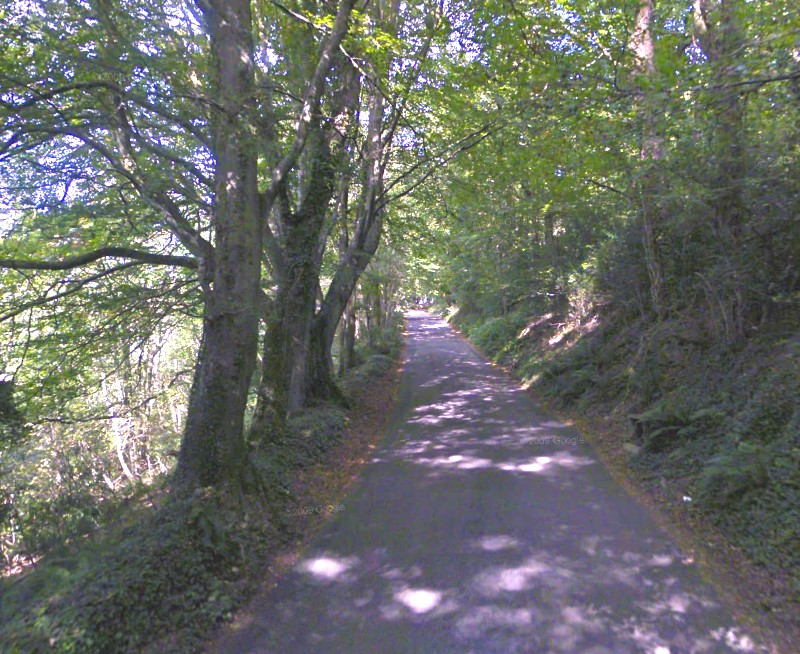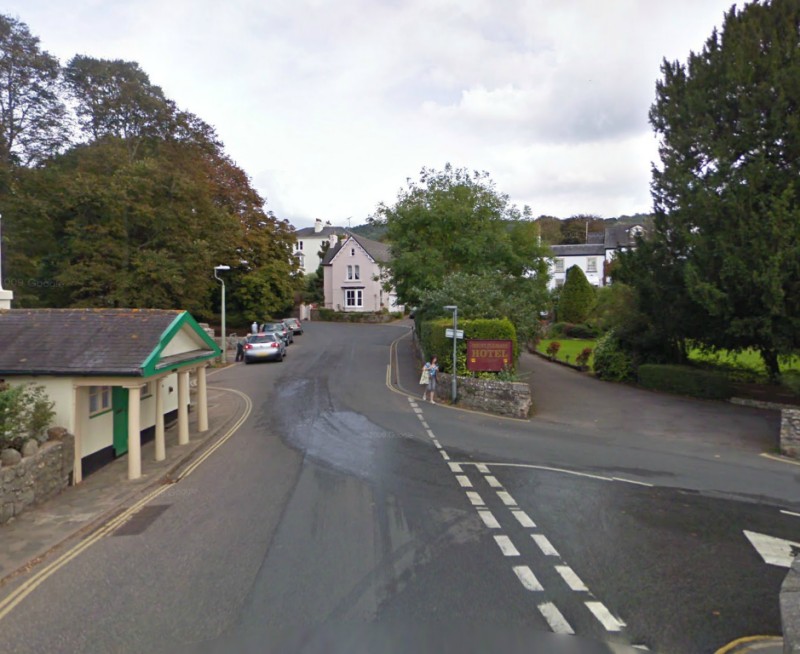Sidmouth FolkWeek: key excerpts
from the 'mudcat' discussion forum regarding mass transport to and from the proposed
Salcombe Hill campsite.

|
The Sidmouth Hopper 16 seater bus uses the
Salcombe Hill route to get to the Observatory - a journey from town takes 8 to 10 minutes
according to the timetable, this doesn't include time to turn around either end.
However, the Hopper does not operate either (usually) fully loaded, at night, or with many
pedestrians milling about along the route. These are important differences. Most hire
companies use 15 or 17 seaters - there are different licence requirements for larger
sizes. |

|
Early discussion of the transport implications of moving
the campsite to Salcombe Hill took place on the mudcat website.
A pdf file of the most relevant posts up to 13 March 2014
is here: mudcat discussion concerning
traffic and road safety.
The following was added by way of a link on
mudcat on 31 March 2014:
 |
One of the steep sections of Salcombe Hill
Sidmouth - the road is narrow, pitch black by night and yet scenic by day. Some sections
are only about 12 feet (3.7 m) wide
Two buses could not easily pass on this road with many pedestrians en-route also.
If a bus had to stop on the steepest section of the road for any reason it would need to
restart, fully laden, on a 1 in 4 hill.
Salcombe Hill is unsuitable for either cyclists or mobility scooter users. |
 |
The junction between Salcombe Road and
Millford Road, Sidmouth, this is probably the most suitable turning area for minibuses
going to the proposed Salcombe Hill campsite.
It is correctly Millford Road. Google says Milford Road! This road leads down to the ford
over the river Sid.But in Folkweek the area is
packed with tourists and folkies as well as car drivers trying to find somewhere to park.
It is also used by the Alpha bus that serves many of the 'alternative'
campsites to the east of Sidmouth. |
I recently drove up and down the Salcombe Hill route,
'pretending' to be a small bus and taking extra time to turn around at each end on a busy
road with lots of pedestrians around. I concluded you could safely do 4 round trips per
hour per bus but you might need to avoid buses meeting each other on the worst sections of
the road. Turning around at the end of Millford Road is far from ideal even with a small
minibus - bearing in mind the several roads that converge near this point and the number
of private cars that may also be shuttling people to and from the campsite at busy
periods. There might also be a conflict with the 'Alpha bus' if that sought to use the
same turning area at peak times.
So you might get four return trips in an hour if you
started and finished at Millford Road (where the ceilidh in the ford doesn't happen)
rather than start at the bus terminus (Kennaway House). The latter would be impracticable
- the bus would always be full by the time it got to Millford Road! From Millford Road to
the proposed campsite is only 1.1 mile up Salcombe Hill, and would take 3 minutes
according to Google - allow 5 minutes at least to include loading and unloading and
turning around. The longer route via the Fortescue Road and the A3052 is 2.9 miles and
Google says 10 minutes. This would avoid all conflicts with walkers.
So one bus might transport 64 people in an hour (in each
direction) allowing for leisurely turning around at both ends and negotiating past walkers
in the dark. During peak periods the flow of people might be almost one-way, so there
might be 5 return trips per hour.
Steve Harris suggests a fleet of 20 buses - presumably so
that several hundred people could be moved inside half an hour. This is an unrealistic
expectation. Only a few buses are available for hire locally, so you'd need to bus them in
(pardon the pun). Typical hire costs are £100 per day or £500 per week and you'd need
somewhere to park them outside of peak periods. The service would need to be continued
until maybe 2am to allow for stragglers to return to the campsite in safety.
Five to ten 15/17 seater buses might provide a viable
service but there would need to be a strictly enforced rule of 'no overloading' in view of
travel up (and down) such a steep hill. Using ten might prove impracticable unless there
was a circular route, which would increase journey times. Volunteer drivers with a D1
licence category and aged between 30 and 70 are generally accepted by hire companies so
FolkWeek might not need to pay for 'commercial' drivers. Each bus might make 50 return
journeys per day or 350 during the week, allowing for slack periods, with an average
occupancy of maybe 8 persons. At £1 per trip and using volunteer drivers FolkWeek would
make a huge profit! The licence
requirements are given here. When I drove festival minibuses down in Cornwall (ten
years ago) it was all quite relaxed, but it was an easy route along 'normal' roads. You
could much improve the projections knowing the actual figures for bus travel to Bulverton
- but I am sure they are a secret! More people might wish to use buses to the proposed
Salcombe Hill site because of the much steeper road.
It would be an interesting exercise to utilise the Sidmouth
Hopper this year to do a few trial runs, with lots of folkies as volunteers milling about
along the route - and of course at night in the rain. The Sidmouth Hopper service only
normally operates May to September and finishes at 5pm - so trips are always in daylight.
I'll put this forward as a exercise! 200 volunteers are
required: you all get to see the proposed new campsite and have tea and cakes provided by
Town Councillors (not paid out of my Council Tax). Seriously, everyone might learn from a
few hours spent testing out the route under 'realistic' conditions. It is quite usual when
rolling out new technologies to utilise 'demonstration projects' - both to see if all
works according to plan and to showcase the results.
I have tried to obtain from Devon County Council (DCC) a
copy of the so-called Traffic Management Plan that was submitted at the last minute by
John Radford's Event Services company on behalf of FolkWeek and used as the basis for DCC
saying that they had no objections to use of the new proposed campsite when their
(informal) input was used by EDDC's Licensing Sub-Committee in December 2013. DCC have
refused to send a copy, so the matter will go to the Information Commissioner.
Devon County Council concede the draft TMP was inadequate.
It is currently being reworked in consultation with 'locally interested parties' -
presumably people in Salcombe Regis and thereabouts.
But no amount of reworking of the TMP can change the nature
or potential dangers of using Salcombe Hill for fleets of minibuses mingled with
pedestrians. The correspondence can be viewed here: emails to and from Devon County Council
I'll reproduce later the many (redacted) emails between
John Radford and Devon County Council. These have been supplied by DCC under FoI. I have
heard nothing locally as yet about provision for substantial car parking near the proposed
new camp site but will enquire.
home page
next page
back to top of section



